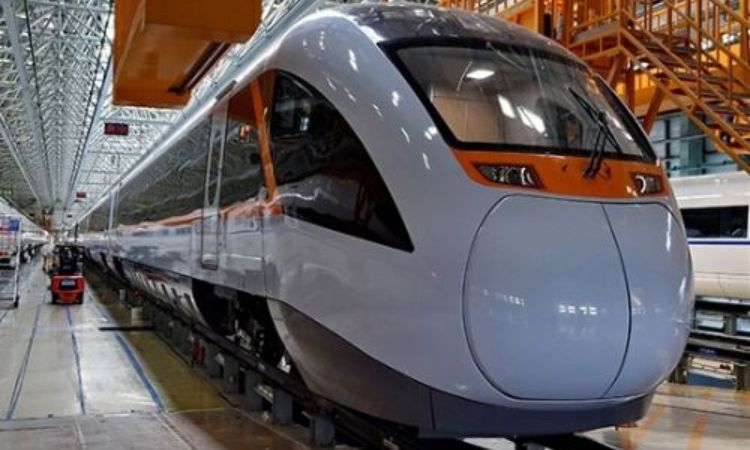
Hybrid Train Market Trends, and Future Outlook (2024-2032)
The global hybrid train market size is expected to grow in the forecast period of 2024-2032 at a compound annual growth rate (CAGR) of 6.3%. As the transportation sector increasingly turns toward more sustainable and energy-efficient solutions, hybrid trains have emerged as a key innovation. Combining the benefits of different propulsion systems, hybrid trains are seen as a vital technology in reducing carbon emissions and operating costs, while enhancing the efficiency and flexibility of rail transportation. This blog post delves into the key trends, market segmentation, dynamics, competitive landscape, and future outlook of the hybrid train market, exploring how these developments are poised to reshape the future of railway transport globally.
Hybrid Train Market Definition and Key Concepts
Before diving into the market’s growth trajectory, it’s essential to understand what hybrid trains are and how they work. Hybrid trains typically combine two or more propulsion technologies, such as diesel, electric, and battery-powered systems, to maximize efficiency and minimize environmental impact. Unlike conventional diesel-only or fully electric trains, hybrid trains offer greater operational flexibility by seamlessly switching between power sources, depending on the availability of infrastructure and the train’s route.
There are several key propulsion systems used in hybrid trains:
- Battery-Operated Trains: These trains use large rechargeable batteries to power electric motors, reducing reliance on external electrical infrastructure and offering zero-emission operation in areas without electrified rail tracks.
- Electro Diesel Trains: This type uses both electric and diesel power, offering flexibility for rail operators to run trains on both electrified and non-electrified tracks.
- Hydrogen-Powered Trains: A promising technology, hydrogen-powered trains use fuel cells to generate electricity, offering zero emissions and low environmental impact, making them an ideal choice for regions prioritizing sustainability.
- Other Technologies: These can include compressed natural gas (CNG) or other emerging fuels, but these technologies are still in early stages of development.
Market Segmentation
By Propulsion Type
- Battery-Operated Trains: Battery-powered trains are gaining traction, especially in regions where electrification of the entire rail network is either too costly or not feasible. With advancements in battery technology, these trains are expected to play a crucial role in reducing operational costs and enhancing energy efficiency, making them an attractive option for short to medium-distance routes.
- Electro Diesel Trains: Electro diesel trains are expected to see continued growth in markets that still have significant non-electrified rail tracks. They offer the benefit of seamless operation over both electrified and non-electrified rail lines, making them a versatile option for diverse geographies. These trains are already widely used in many European countries and are expected to expand into other regions.
- Hydrogen-Powered Trains: Hydrogen trains are one of the most exciting developments in the rail industry. These trains use fuel cells to generate electricity, emitting only water vapor and heat as by-products. Hydrogen-powered trains are especially appealing for regions with limited electrified tracks, such as rural and remote areas. As hydrogen fuel infrastructure improves, this technology is set to become a major player in sustainable rail transportation.
- Other Propulsion Technologies: Other hybrid technologies are still in the experimental or early adoption phase. These include compressed natural gas (CNG) or liquefied natural gas (LNG)-powered trains, which could offer further alternatives to diesel or electric options.
By Application
- Passenger Transportation: Passenger trains represent the largest segment in the hybrid train market, driven by the growing demand for environmentally friendly and energy-efficient transport options in urban and intercity rail systems. Hybrid trains are increasingly seen as a solution to meet the demands of passengers for fast, reliable, and clean transportation.
- Freight Transportation: The freight sector, too, is embracing hybrid trains, particularly in regions where rail freight is essential for the economy but infrastructure development has been lagging. Hybrid trains offer significant reductions in fuel consumption and greenhouse gas emissions, improving both operational efficiency and sustainability in freight transportation.
By Region
- North America: The North American market is growing, especially in Canada and the U.S., where hybrid trains are being considered as a solution for upgrading aging rail infrastructure and meeting sustainability targets.
- Europe: Europe remains the leading region in hybrid train adoption, with several countries already deploying hybrid electric-diesel and hydrogen-powered trains. The European Union’s ambitious sustainability and decarbonization goals are a major driver for hybrid train technologies.
- Asia-Pacific: In Asia-Pacific, countries like Japan and China are investing heavily in hybrid and electric trains as part of their broader strategy to reduce air pollution and meet carbon reduction targets.
- Rest of the World: Other regions, particularly parts of Latin America and Africa, are beginning to explore hybrid train solutions to address infrastructure challenges and reduce environmental impacts.
Market Dynamics
SWOT Analysis
- Strengths: Hybrid trains offer lower emissions, fuel efficiency, and flexibility, which make them an attractive choice for operators seeking cost savings and compliance with environmental regulations.
- Weaknesses: High initial investment costs and limited refueling or charging infrastructure for hydrogen-powered trains are major barriers.
- Opportunities: Growing government support for green transportation, rising environmental concerns, and technological advancements in battery and fuel cell technology are expected to create substantial growth opportunities.
- Threats: Competition from fully electric trains, which do not require onboard fuel storage, could impact hybrid train adoption. Additionally, the high cost of hydrogen production and infrastructure may slow growth.
Porter’s Five Forces Analysis
- Bargaining Power of Suppliers: With hybrid train technology still evolving, the bargaining power of key suppliers—particularly in battery technology and fuel cells—could influence pricing and innovation.
- Bargaining Power of Buyers: As the market grows, buyers (rail operators) will have more choices, which could lower prices.
- Threat of New Entrants: The complexity and cost of developing hybrid train technologies pose significant barriers to entry, but new players could emerge with innovative solutions.
- Threat of Substitutes: Fully electric trains and other low-emission transport modes (like electric buses) present competition to hybrid trains.
- Industry Rivalry: The hybrid train market is competitive, with established manufacturers and new entrants vying to develop the most efficient, cost-effective solutions.
Key Indicators for Demand
- Increased government investment in green infrastructure.
- Public demand for sustainable transport options.
- Technological advancements that make hybrid trains more affordable and efficient.
Key Indicators for Price
- Decreases in the cost of battery and hydrogen fuel cell technologies.
- Market dynamics influenced by subsidies, tariffs, and environmental taxes.
Competitive Landscape
The hybrid train market features a mix of established rail manufacturers and new players specializing in hybrid technology. Major companies include Alstom, Siemens, Bombardier, and Hitachi. These companies are leading the charge in developing hybrid trains, with a focus on reducing emissions, improving energy efficiency, and enhancing performance. Partnerships between train manufacturers, energy companies, and governments are common as they work together to deploy hybrid solutions.
Future Trends and Market Outlook (2024-2032)
As the global focus shifts towards reducing carbon footprints, the hybrid train market is expected to witness rapid growth over the next decade. Technologies like hydrogen-powered trains are poised to revolutionize rail transport, especially in regions without extensive electrified rail infrastructure. Battery technology will continue to improve, enabling longer ranges and faster charging times, making hybrid trains more cost-competitive. By 2032, hybrid trains could become the standard for both passenger and freight services, particularly in regions seeking to decarbonize transportation networks.



